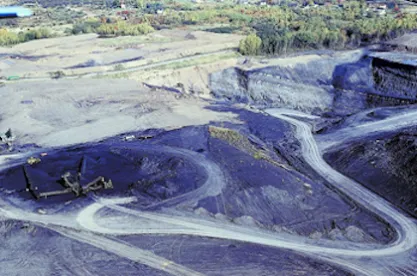As outlined in the first installment of our series, “Striking the Balance: Permitting Reforms for Mining and the Energy Transition,” delays in mine permitting inhibit the transition to cleaner energy. The irony is that well-intentioned but inefficient rules designed to mitigate the environmental impact of mining may pose a different threat to our environment in the long term.
Can Permitting in the United States Be More Efficient?
The Department of the Interior Interagency Working Group (IWG) on mining reform argues that the time to process a permit in the United States is consistent with the worldwide average. The IWG also expresses skepticism about the common view, based on work by SNL Metals and Mining, that it takes ten years to permit a mine in the United States, a time period that is well in excess of permitting times in other mining jurisdictions like Canada and Australia. Still, the current administration recognizes there is a need to improve the permitting process. In 2022, the Biden Administration released the Biden-Harris Administration Fundamental Principles for Domestic Mining Reform. One of these fundamental principles is “Provide Permitting Certainty.” The Fundamental Principles suggest adopting clear permitting standards and transparency to, among other things, “improve permitting times.”
Mining in the United States
The U.S. has a complicated system for securing the right to mine. Minerals owned by private parties can be sold or leased for development. Some minerals are owned by state governments or Native American tribes. About one-third of the nation’s land is owned by the federal government, and the grant of the right to mine those federal lands can take a variety of forms. Some minerals may be leased to miners under the Mineral Leasing Act of 1920, or under statutes governing the actions of the federal agency with control over the minerals. In addition, large areas of federal lands are open for mineral location under the General Mining Law of 1872. A U.S. citizen has the right to enter most federal lands to prospect for and locate valuable minerals. If the prospector finds valuable mineralization, that miner can stake a claim and secure the right to exclusively develop those minerals.
The Permitting Process
Jurisdiction, stakeholder interests, and complexity contribute to an often duplicative, onerous, and lengthy process for a mine to be permitted. Permitting is just the very first step in what could be a decades long process before minerals may be extracted and brought to the market.
Permitting is just the very first step in what could be a decades long process before minerals may be extracted and brought to the market.
For mineral development on federal lands, a federal mining permit is required. The core of the permit application, when mining on Bureau of Land Management (BLM) or U.S. Forest Service controlled land, is the mining Plan of Operation (PoO). The PoO details the applicant’s plan for mining. It describes the location and size of the infrastructure required for mining. It specifies the type of mining to be conducted (e.g., open pit or underground) as well as the details of mining (e.g., tons of ore processed through a mill). The PoO specifies the size and types of equipment to be used in the mining process. Further, the PoO informs what mitigation measures may be necessary to address the impacts of mining on the physical and social environment.
Where mining will occur on private lands or state-owned lands, a state mining permit will be required. The permitting process varies from state to state, but the broad concepts and key elements of the permit are similar in all states.
A mining project under state jurisdiction or a mining project on federal lands will also require a variety of state environmental permits for air emissions and water discharge and use. Some local counties or municipalities may require industrial siting or other land use permits. The project may require as many as 30 permits, which often leads to duplicative permitting requirements.
The National Environmental Policy Act (NEPA) was enacted “to ensure that federal agencies evaluate the potential environmental impacts of their actions and consider the consequences when determining whether or not to proceed with the action.” NEPA will always apply when reviewing applications for mining on federal land. NEPA may also apply when a mine subject to state jurisdiction requires a federal permit, such as a permit to fill wetlands regulated under Section 404 of the Clean Water Act. The requirements specified under NEPA must be followed by the government and the applicant before a final Record of Decision regarding the mining application is issued.
The process for obtaining a mining permit on federal, tribal, or private land has multiple integrated steps. The applicant may be required, or may choose, to conduct baseline studies to quantify and qualify, for example, the population of animal, fish, and flora in the mining area, the types of local cultural sites, and the water resources potentially utilized and impacted by mining operations. Ancillary permits, such as an eagle incidental take permit through the U.S. Fish & Wildlife Service, may be required. The permitting process will include consultation with stakeholders, including state and local governing bodies, elected officials, Native American leaders, and non-governmental organizations (NGOs). Applicants will also be required to calculate reclamation costs and post a bond with the state for a specified amount.
Delays and Proposed Remedies
Because there are multiple sources of permitting delay, there are multiple opportunities to improve efficiency.
NEPA is oft-cited as a primary source of permitting delay. NEPA review adds an additional layer of permitting analysis, and NEPA can be used by project opponents to delay project approval. Delays make a project more expensive and may be fatal to the project. We will take a closer look at NEPA in the next article in this series.
Consultation with tribal interests and engagement with stakeholders is a fundamental aspect of mine approval. As we have established, every step creates another opportunity for delay. We will address consultation and engagement with stakeholders later in this series.
Because there are multiple sources of permitting delay, there are multiple opportunities to improve efficiency.
Several impediments to the efficient permitting of mining projects can be addressed entirely within the context of the existing permitting process.
- Improved Jurisdictional Coordination: The legal framework of mine permitting is complex. Some of this complexity arises from the stacking of federal, state, local and tribal laws onto a mining project. A mining project thus requires a suite of permits from a variety of agencies. The agencies involved in mine permitting would benefit from coordinating the permitting process. Coordination among federal, state and local agencies, in the spirit of cooperative federalism, would certainly help.
- Uniform Interagency Approach: The federal government could adopt a uniform approach to mine approval among the federal agencies that would at least mitigate this complexity, as had been done in Canada and Australia. The Government Accountability Office (GAO) found that, even at the federal level, ineffective interagency coordination and collaboration could delay a permit by up to three years. Designing a coordinated permitting process to avoid duplicative permitting, even if limited to the federal level, would go a long way toward efficient permitting.
- Adequate Staffing and Specialized Talent: Finally, the agencies managing the permitting process are often understaffed. The GAO, for example, found that the Forest Service and BLM do not have enough staff in critical positions, such as archeologists and biologists, to process mine plans. Providing adequate staffing, as well as recruiting more specialists to handle the particular analyses required by mine permitting, is a critical step toward securing the metals necessary for the energy transition.
The Biden Administration has policy goals to improve mine permitting timing and “expand[ing] domestic critical minerals supply chain, breaking dependence on China and boosting sustainable practices.” Implementing meaningful permitting reform is a key to achieving those policy goals.




 />i
/>i
